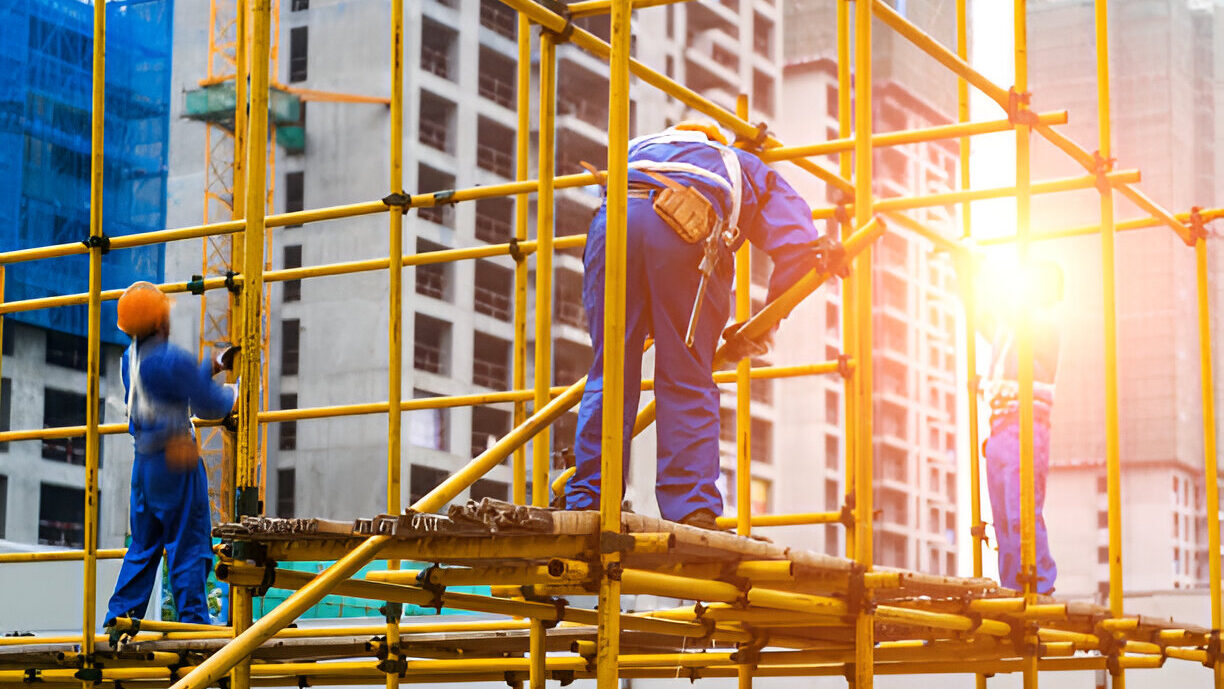
Scaffolding is essential to the construction industry, offering a stable and reliable platform for workers to carry out tasks at various heights. Choosing the right types of scaffolding can make a significant difference in the safety, efficiency, and cost of a project. With several types of scaffold available, each designed for specific purposes and applications, understanding the most common kinds of scaffolding and their uses can help construction professionals make informed decisions.
This blog covers the different types of scaffolding, their advantages, typical uses, and how to choose the right type for your construction work. As with any other construction project, depending on whether you are creating a new building or rehabilitating an old one, it is crucial to know the types of scaffolding to perform appropriate and safe construction. Brick scaffolding, tubular scaffolding, cantilever scaffolding, and sophisticated modular scaffolding will be used to examine their key features. The following scaffolding kinds may help you choose the best one for your building project after reading this text.
Important Types of Scaffolding Used in Construction
The following are the main types of scaffolding commonly used in the construction industry.
1. Single Scaffolding: A Reliable Choice for Brickwork

Single scaffolding consists of a framework of standards, ledgers, and putlogs. We use this type of scaffolding primarily for brick masonry. The vertical members are known as “standards.” Meanwhile, the horizontal members are referred to as “ledgers.”
To construct single scaffolding, fix the vertical standards firmly into the ground. Position them parallel to the wall under construction. Traditionally, workers used timber or bamboo for these standards. Today, steel pipes serve as the preferred material.
Place the standards approximately 1.2 meters away from the wall. Maintain a distance of about 2 to 2.5 meters between each standard. Connect the standards using ledgers at intervals of 1.2 to 1.5 meters. The putlogs link the scaffolding to the wall through pre-drilled holes. These should also be spaced between 1.2 and 1.5 meters apart.
For taller structures, add braces for extra support. Securely fix the braces diagonally across the standards. Although effective, this type of scaffolding is less common in modern construction.
2. Double Scaffolding: The Ideal Solution for Stone Masonry
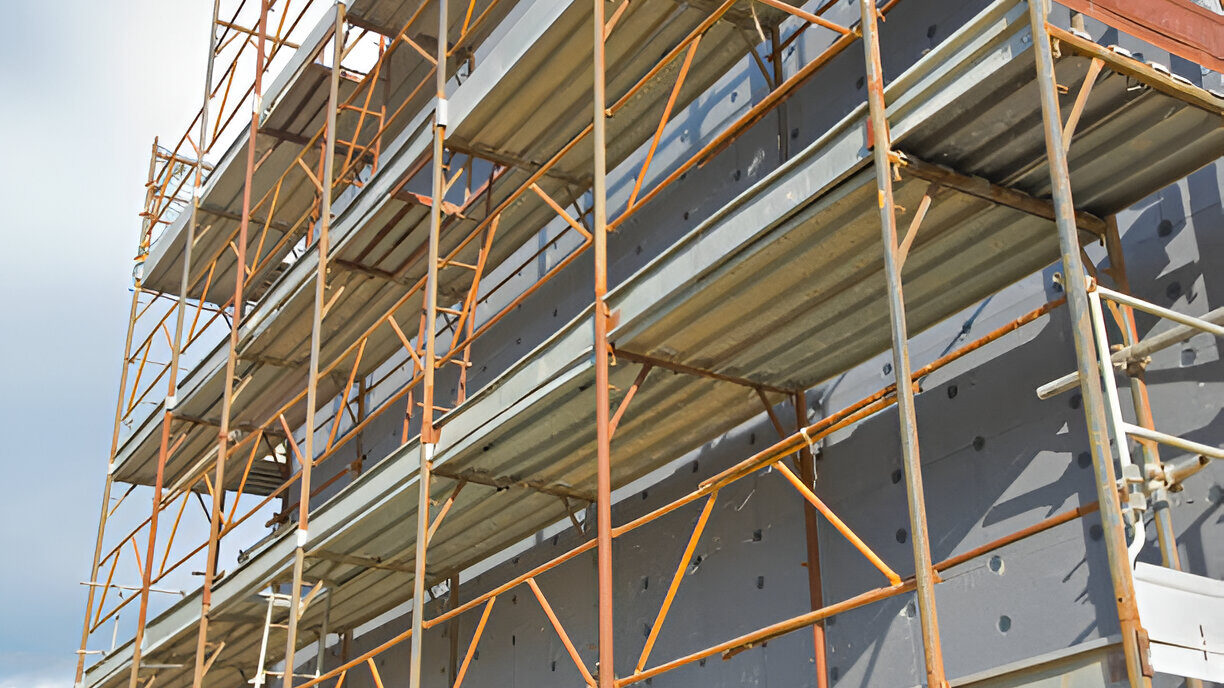
Many literacy circles acknowledge that double scaffolding is solid and stable. It goes by many names and is widely known as Mason’s scaffolding among construction specialists. Of the two, the type of scaffolding used in this form of construction is relatively much more rigid than the single scaffolding. Therefore, it offers optimal assistance in numerous construction processes.
Double scaffolding, however, does not need the holes to be drilled on walls as does the single scaffolding. Three rows were kind of dug into the ground, so workers installed two rows of standards instead. The first row of shelving is 20 to 30 centimeters from the wall. The outer row is located 1500mm from the front row.
The workers link the standards by ledgers, which provide further support. Also, transom decks and cross bracing provide extra strength and stability to the whole structure to be built. Several construction teams use this type of scaffold for construction work, especially in stone masonry. It is highly dependable to meet the requirements of loads and complex work, among other things.
This independent scaffolding method guarantees safety during critical work conducted at heights. Although constructing a double scaffold involves more material and duration than constructing a single one, the primary advantages make this plus worthwhile. Overall, due to its better performance, it is the preferred choice of construction professionals who work with stone masonry.
3. Cantilever Scaffolding: Adapting to Challenging Ground Conditions

Cantilever scaffolding uses projecting arms, known as needles, anchored to the building. This type of scaffolding adapts to challenging ground conditions effectively. Use it when the terrain cannot support traditional vertical standards.
When constructing cantilever scaffolding, ensure that the projecting arms are securely attached. This connection guarantees stability while workers perform their tasks. This scaffold type demonstrates flexibility, allowing work in tight urban environments.
Employ cantilever scaffolding when conventional methods fall short. It provides a safe solution for difficult projects. Workers appreciate its ability to reach otherwise inaccessible areas.
Cantilever scaffolding proves useful under specific conditions. Use it when the ground cannot support standards. It is ideal when the area near the wall must remain free from traffic. Additionally, use it when the upper part of the wall is under construction.
Another name for this type of scaffolding is “needle scaffold.” The needle supports the entire structure, often made of timber. Workers brace the needle on all sides to prevent the scaffolding from toppling.
There are two types of cantilever scaffolding: single frame and double frame. In the single frame type, a chain of needles supports the standards. These needles extend through holes in the wall. The double frame type supports needles within the floors through openings.
Using cantilever scaffolding becomes essential when obstacles prevent erecting scaffolding from the ground. For example, workers might need to construct cantilever scaffolding in a busy street. This type of scaffolding adapts to the specific requirements of the construction field.
4. Suspended Scaffolding: Flexibility for High-Rise Projects
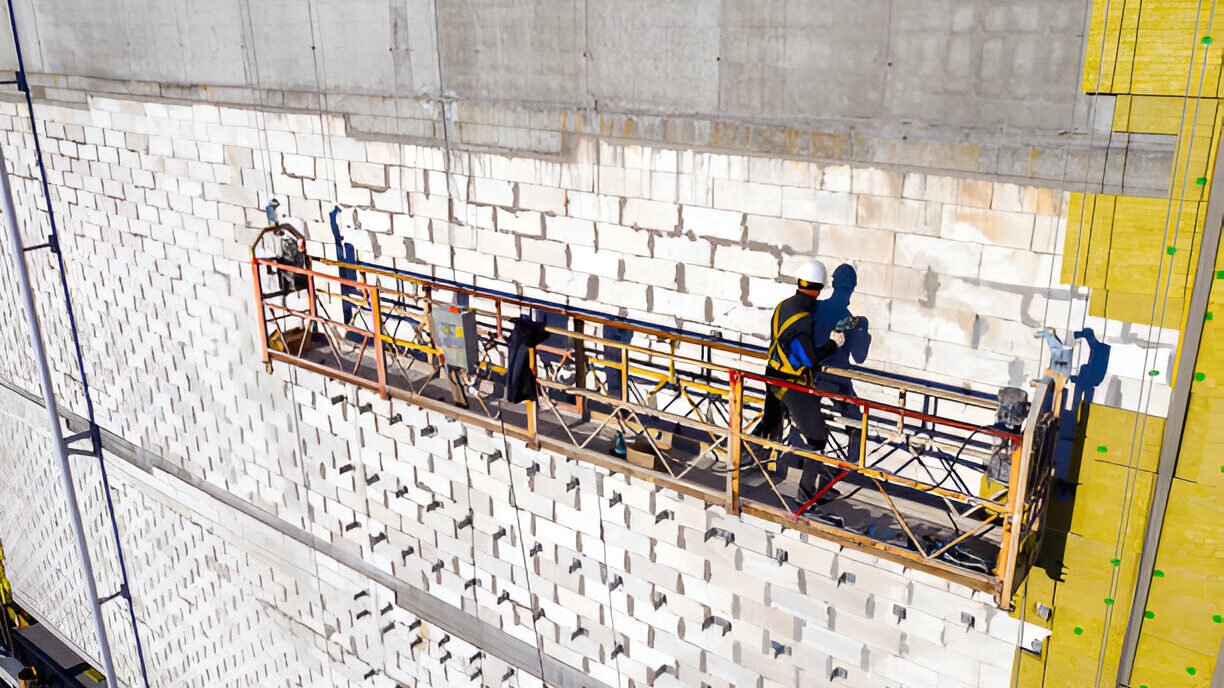
Suspended scaffolding features a platform that hangs from a building’s roof. Workers can adjust the height of this scaffold easily. This flexibility makes it ideal for high-rise construction projects.
When setting up suspended scaffolding, attach the platform securely to the roof structure. This ensures that it can bear the required load. Workers can perform various tasks like painting and cleaning windows. The platform’s ability to move quickly enhances productivity.
Use suspended scaffolding for projects that require frequent repositioning. It allows for quick adjustments without extensive setup. However, remember that this scaffold type typically accommodates lighter loads.
5. Trestle Scaffolding: Mobility and Convenience for Indoor Tasks

Trestle scaffolding is another type of scaffold widely used for interior work. This kind of scaffolding consists of a working platform supported by movable ladders or tripods, making it a great choice for tasks requiring mobility, such as painting, plastering, or minor repairs.
Suitable for lower heights—typically up to 5 meters—trestle scaffolding is favored for its ease of transport and setup. It is less cumbersome than traditional scaffolding systems, allowing workers to quickly adjust their setup based on project needs. The materials of scaffolding used in this type are generally lighter, further enhancing its mobility.
6. Steel Scaffolding: Strength and Durability for Large Projects
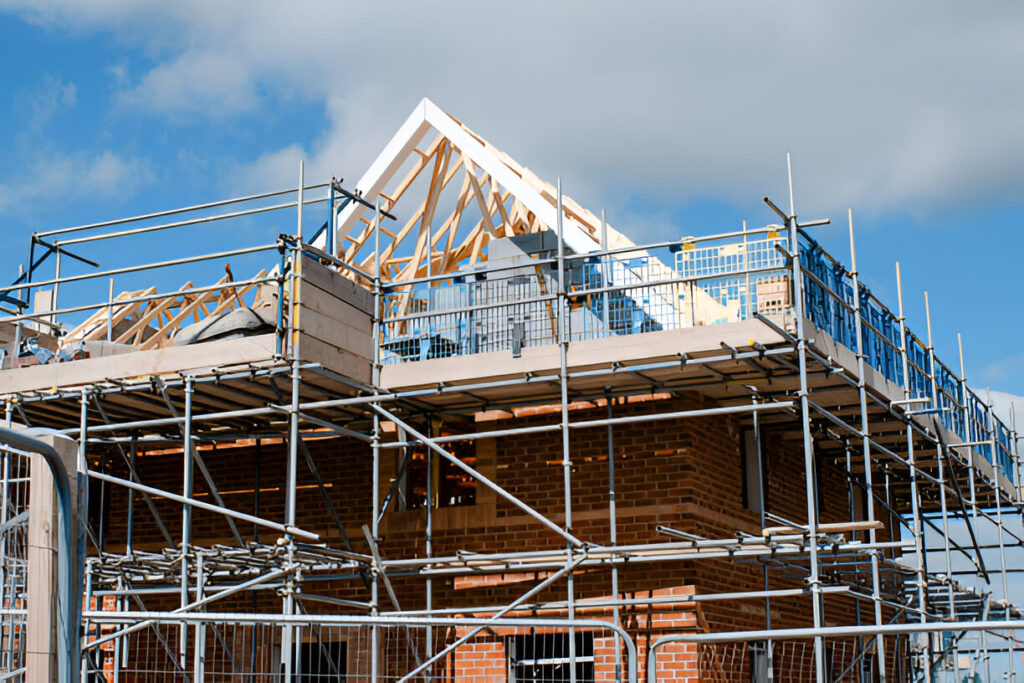
Steel scaffolding is particularly relevant for significant construction works because of its high stability. It is solid and lasts a long time, which means that contractors prefer it. One of the advantages of this type of scaffolding is that it has the capacity to carry heavy loads, and this becomes very important, especially when it is needed to erect large structures. Construction crews choose steel scaffolding as the type that will last long and is not easily degraded.
This type of scaffolding is made up of steel tubes that are joined by couplers. It will go well because workers can conveniently build and dismantle it on-site. The fidélité of steel scaffolding answers the need for its use in construction applications. What sets it apart is that it remains immune to any weather circumstances.
For builders, steel scaffolding is one of the most widely used species of scaffolding today. This makes it suitable for many different forms of need, both in terms of the scaffolding that is required and the construction tasks involved. It is used in construction tasks as varied as tall buildings or steel bridges.
7. Patented Scaffolding: Quick Assembly for Efficient Projects

Patented scaffolding revolutionizes construction efficiency with its quick assembly design. This type of scaffolding includes pre-engineered components that fit together seamlessly. Workers appreciate how easily they can set it up without extensive training.
The innovative design significantly reduces labor costs and construction time. Builders often favor patented scaffolding for projects that demand rapid execution. Its lightweight materials allow for easy transport and storage, making it ideal for contractors on the go.
Patented scaffolding exemplifies modern engineering solutions in the construction industry. Its practical application helps streamline various projects, showcasing the evolution of scaffolding technology.
8. Rolling Scaffolding: Enhancing Mobility for Repetitive Tasks
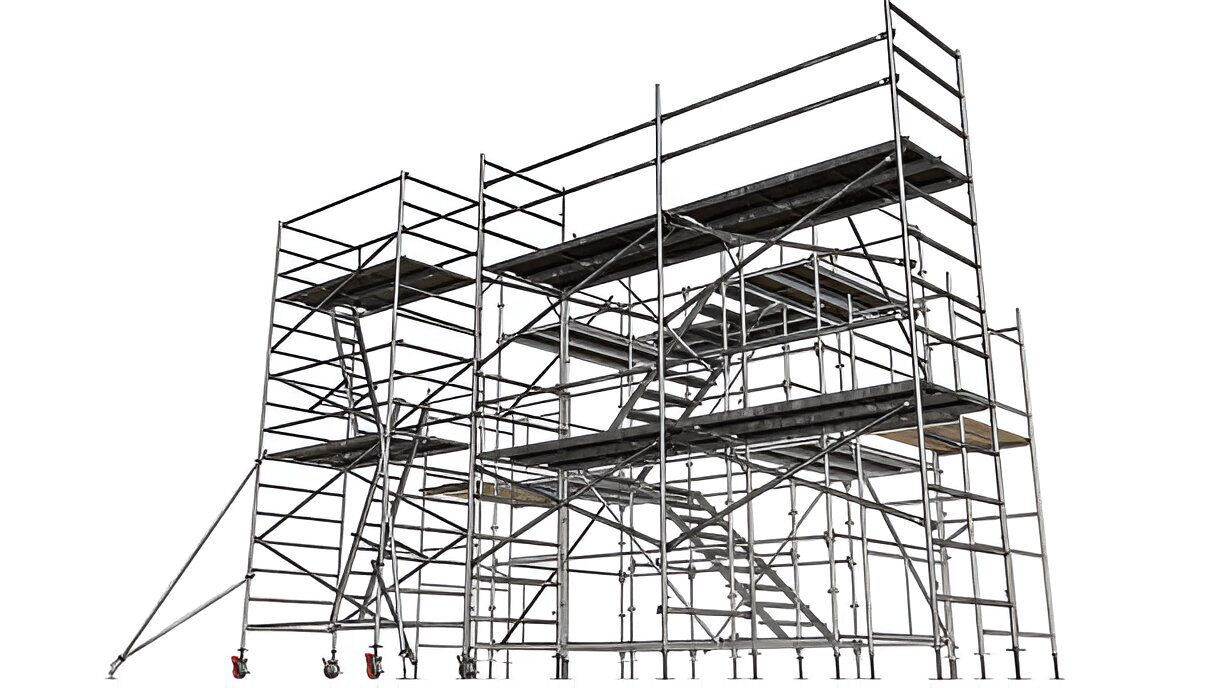
Rolling scaffolding offers better mobility, making it ideal for repetitive tasks. This kind of scaffolding has wheels, which allow you to easily travel to other stations that require top-most construction. Designed for use indoors, rolling scaffolding is useful in activities such as painting and fixing.
The deployment of rolling scaffolding is relatively easy. Further, the workers can change their height quickly depending on the working environment. This is particularly important when addressing various tasks in closed areas, and the ability to add them together makes movements even more flexible.
Construction workers often use rolling scaffolding for temporary operations in tight spaces. Since teams may now complete jobs, their design boosts productivity and speed. When convenience is key, rolling scaffolding is optimal.
9. Tube and Coupler Scaffolding: Flexibility for Complex Structures
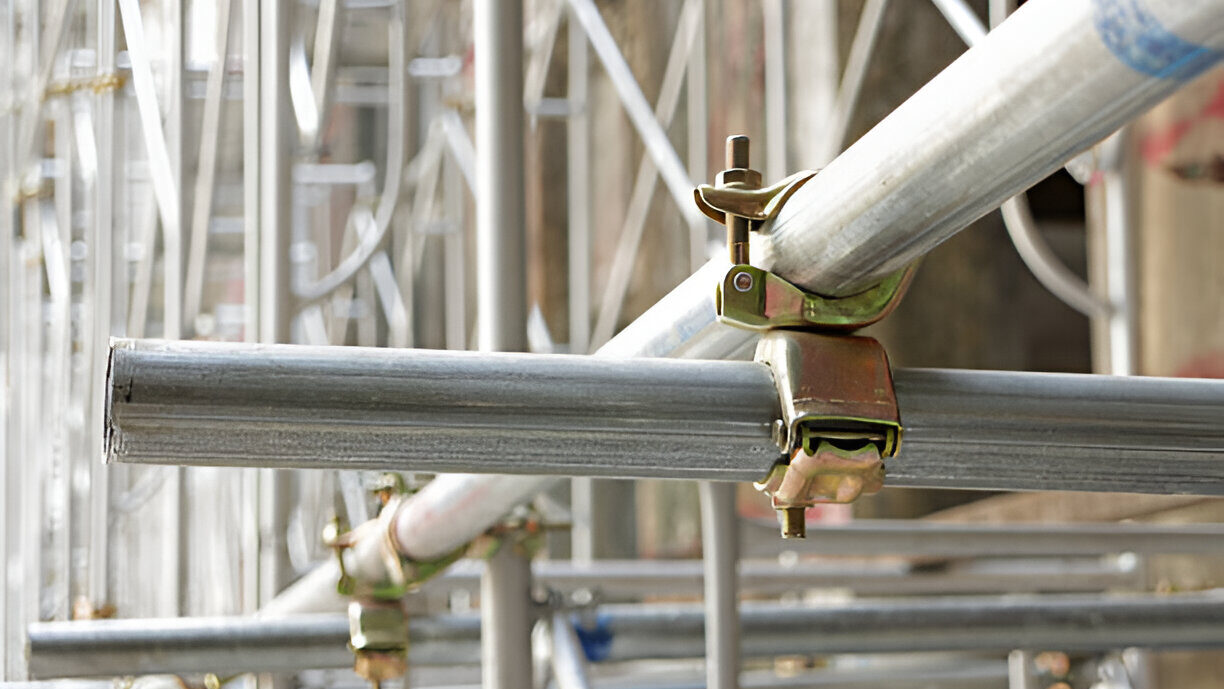
Tube and coupler scaffolding offers exceptional flexibility for constructing complex structures. This type of scaffolding consists of steel tubes joined by couplers, allowing various configurations. Workers can tailor it to fit unique building shapes and sizes.
The adaptability of tube and coupler scaffolding makes it a go-to solution for intricate projects. Contractors appreciate its ability to navigate tight corners and accommodate various heights. This kind of scaffolding proves essential for architects and engineers aiming for innovative designs.
Constructing with tube and coupler scaffolding often requires skilled labor. Understanding the components is crucial for assembling it correctly. Builders benefit from diagrams and scaffolding pictures to ensure proper installation.
Scaffolding for Brick Pointing
Brick-pointing involves repairing mortar joints between bricks. This process demands precision and the right scaffolding setup. Proper scaffolding ensures safety and accessibility, allowing workers to perform their tasks effectively.
Scaffolding for brick pointing typically includes single or double scaffolding. Many refer to single scaffolding as bricklayer scaffolding. This type is perfect for straightforward brick pointing projects. It offers easy setup and cost-effectiveness for smaller tasks.
- Single Scaffolding: This type, also known as bricklayer scaffolding, is ideal for straightforward brick pointing projects, offering easy setup and cost-effectiveness for smaller tasks.
- Double Scaffolding: This type, also known as mason scaffolding, is often used when additional support is needed, especially for stone or masonry work. Double scaffolding features two rows of standards, offering increased stability and safety.
Workers on infrastructure projects are more stable with brick scaffolding. They can slide across the structure to repair and touch other areas. Scaffolding improves brick-pointing efficiency. Essential for masonry repair, it reduces accident risk.
Contact Us for Your Brick Pointing and Scaffolding Needs!
For quality brick-pointing and scaffolding services in the United States, rely on Apex Contractors Inc. Our dependable scaffolding enhances safety, balance, and reach, ensuring your team accomplishes its goals efficiently. Our mobile setup supports brick-pointing projects at various heights, making any masonry repair within reach. Contact us today to get started!
